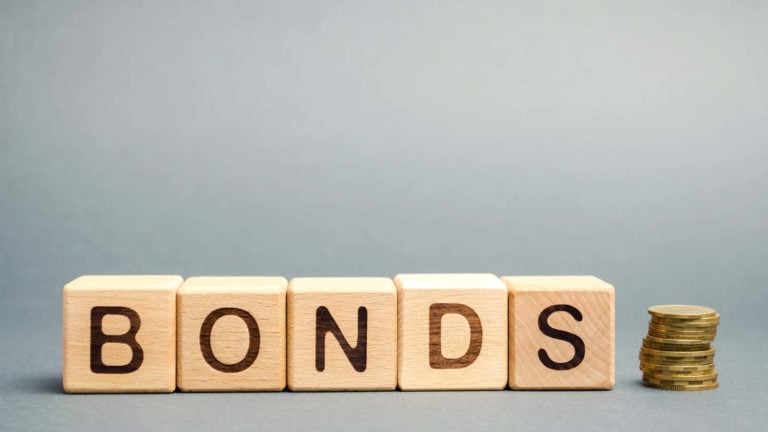An upside to rising rates is the market’s reintroduction to fixed-income assets providing a decent income. As exciting as auctions and secondary market sales are, though, typical Treasuries lack the excitement of active stock trading. Watching your cash compound in a high-yield savings account (HYSA) is even duller. However, bond exchange-traded funds (ETFs) offer all the excitement of stocks and unlock a few benefits for those willing to wait. Even if rates rise.
The Federal Reserve, once the money-printing market darling, is 2023’s perennial punching bag. As central bankers shoot for a rate closer to 5.25%, we’re liable to continue seeing rates rise over the coming months since we hover below target today. Investors are understandably spooked as rate hikes deflate formerly ballooning stocks and debt ceiling threats loom.
The market is resilient. Retail investors are thrilled about HYSAs finally kicking up yield, and more are climbing onto bond ladders. But many overlook bond ETFs based on their relative complexity and range of options. For these investors, fighting paralysis by analysis and piling into bond ETFs might be a perfect pill for an ailing portfolio.
| SHYG | iShares 0-5 Year High Yield Corporate Bond ETFs | $40.93 |
| CWB | SPDR Convertible Securities Bond ETFs | $66.16 |
| FLOT | iShares Floating Rate Bond ETF | $50.51 |
iShares 0-5 Year High Yield Corporate Bond ETFs (SHYG)

Expense Ratio: 0.3%, or $30 annually on a $10,000 investment
Investing in bond ETFs like iShares 0-5 Year High Yield Corporate Bond ETF (NYSEARCA:SHYG) demands an understanding of unique mechanics. Bond prices (and, by extension, bond ETFs) move in the opposite direction to their yields (influenced by interest rates). When rates increase, bond prices decrease. Investor sentiment also plays a role in pricing and yields. Concerns about debt ceilings and interest rates persist, so short-term assets may yield more than long-term ones. This interplay is, basically, the inverted yield curve you’ve likely heard about.
But even if bond ETF prices fall, the set coupon means your yield remains stable. So, while you may see a nominal pricing loss, the underlying bonds’ coupon rate remains constant. As the price drops, your yield effectively widens and balances out the changes.
SHYG is uniquely positioned to benefit from this bond ETF benefit. Its underlying assets are short-term, high-yield bonds from companies with lower credit ratings. Since they’re a riskier vehicle for investor capital, they push higher yields to compensate for credit risk.
But SHYG’s price remains suppressed after nearly two years of rate hikes while the prospect of more pain means it will likely stay flat. However, many think that the worst is likely over for SHYG since its basket of bonds’ average maturity is around three years. So, as the yield curve normalizes, SHYG’s portfolio pricing likely will too.
Since SHYG’s price is battered and won’t rebound quickly as long as rates remain, reinvesting monthly distributions lets investors dollar-cost average into an asset poised for a reversal when rates stabilize or drop.
SPDR Convertible Securities Bond ETFs (CWB)

Expense Ratio: 0.4%, or $40 annually on a $10,000 investment
Convertible bond ETFs like the SPDR Convertible Securities Bond ETF (NYSEARCA:CWB) are perfect for on-the-fence investors. CWB is for those who don’t want to miss a stock rebound while still capitalizing on rising rates. Convertible bonds, typically issued by riskier companies that need to entice investors with more than coupon payments, include a provision to turn the asset into standard stock.
Usually contingent on the underlying company stock meeting a predetermined price target, convertible bond ETFs act a little like stocks and bonds. Issuing a periodic coupon payment, distributed to CWB holders as a monthly distribution, the payout is relatively meager compared to yield kings. But despite eking out a roughly 2% annual yield, CWB defied market gravity and jumped more than 4% since January without the volatility marking bond and stock markets.
CWB is ultimately a middle-road option for a more conservative set and isn’t ideal for a bull run. But, by combining stocks and bonds, CWB represents a unique alternative to diversify fixed-income holdings. As rates rise, the portfolio’s coupon payments will likely also, while stock conversion opportunities help hedge against a rate reversal. Furthermore, convertible bond ETFs like CWB offer access to an asset otherwise closed to retail investors since these securities are often restricted to institutional and big-money buyers.
iShares Floating Rate Bond ETF (FLOT)

Expense Ratio: 0.15%, or $15 annually on a $10,000 investment
Like convertible bonds, floating-rate bonds are often off-limits to retail investors. But investors can exploit bond ETFs like the iShares Floating Rate Bond ETF (BATS:FLOT).
Unlike fixed-rate counterparts, floating-rate bonds have coupon rates that fluctuate based on the Fed’s interest rate. As rates rise, so do floating bond coupon payments. FLOT is full of these types of bonds, so it’s my “pure play” bond ETF that benefits most from rising rates.
Right now, FLOT’s distributions yield around 5.5% annually. Continually resetting rates come with an additional benefit beyond increased yield, though. Since the yield adjusts with market interest rates, FLOT and floating-rate bonds generally don’t see the price cuts fixed-rate bonds do.
This pricing agnosticism means FLOT is remarkably stable, with a 0.03 beta and 0.95 standard deviation over the past three years. Compare that to the SPDR S&P 500 ETF’s (NYSEARCA:SPY) standard deviation of 18 or SHYG’s 0.68 beta, and it’s clear that FLOT acts almost like a money market account with a little more juice behind it that’ll only get healthier as rates rise.
On the date of publication, Jeremy Flint held a long position in SHYG. The opinions expressed in this article are those of the writer, subject to the InvestorPlace.com Publishing Guidelines.
